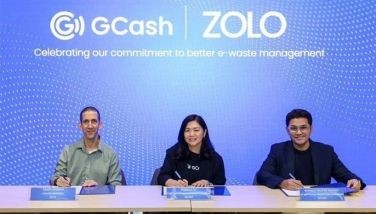Rural bankers adopt microfinance approach
April 6, 2004 | 12:00am
Because the Microenterprise Access to Banking Services (MABS) works with rural banks that have owners who invest their own equity funds, MABS’ participating banks have stronger governance structures than most MFIs. In addition to superior governance, the rural banks have the benefit of already being regulated financial institutions, legally authorized to mobilize savings deposits.
Since they do not require donor funds for lending, the MABS program focuses on capacity building rather than capital subsidies.
In 1998, the MABS program began to assist rural banks in the Philippines to develop the capability to profitably provide financial services to microenterprises. A systematic method for transferring microfinance best practices knowledge and product development to rural banks was developed through a comprehensive technical assistance and training package known as The MABS Approach.
The MABS Approach includes intensive one-on-one technical assistance, workshops, seminars, in-bank coaching, and exposure and training visits to participant banks. Each bank is assigned a technical advisor who makes sure that the training and technical assistance is delivered properly and efficiently. In addition, each participant bank receives focused attention and support, which includes the following from MABS:
• Institutional assessment
• Senior management orientation
• Market survey
• Product development and enhancement
• MIS enhancement
• Business planning
• On-the-job training (including sessions on cashflow lending and zero tolerance of delinquency)
• Development of in-house training capacity
MABS – work with clients yields the following results: development or enhancement of microfinance products, practices and procedures that follow best practice principles; implementation of a profitable microfinance line of business; and strengthened capacity not only to manage microfinance operation, but to continually expand it.
The general pattern of the MABS approach is to build up and then phase out the technical assistance and training. Some examples of MABS areas of focus follow:
Product development and enhancement. Poor people’s lack of access to savings services is especially unfortunate. Without access to savings accounts, many poor people, especially the rural poor, have no convenient or safe place to store their savings. MABS plays an important role in this area by developing rural banks’ capacities to conduct market research and design products, including savings that serve low-income people.
The total number of micro-depositors in the MABS participating banks as of February 2004 stood at 524,594 with P604 million in outstanding micro-deposits. Box 1 shows an example of a savings product developed under MABS: the Ganansya Box.
Box 1: The Ganansya Box – reducing savings transaction costs. The age-old concept of the – piggy bank’s is now used to encourage people to build up their savings on a regular basis and capture these savings in their local bank. Indeed, the many services offered by several MABS participating banks include savings boxes called "Ganansya Box" or "Profit Box." This simple but unique approach to offering small savings reduced the high transaction costs of daily and weekly pick-up savings account services.
These boxes have a small lock, and the key is kept by the bank tellers. When the client comes in with his/her "Ganansya Box" the bank teller opens the lock and deposits the funds to the client’s account.
(Microsavings:What we can learn from informal savings scheme, Owens and Wisniwski, 1999.)
MIS development. MABS developed a banking software program, Rural Banker 2000 or RB2000, which is easily adaptable to the product mix of any rural bank, including microfinance services. RB2000 consists of basic banking modules for 1) deposit management, 2) loan management, and 3) general ledger accounting. The system also includes support modules for 1) financial product design, 2) cash dispensing and ATM interface, 3) assessing charges, fees and taxes, and 4) general ledger interface. MABS is working with three private service providers who install RB2000 into rural banks.
In addition, MABS nurtures the expanded use of the credit bureau by rural banks, which was started in 2001 to minimize the negative effects of increased competition, such as clients over indebtedness and defaults. Following best practices, MABS has helped to integrate the rural banks’ microenterprise loan clients into an existing national credit bureau, by creating an e-mail encryption program that allows rural banks to share and receive information electronically at a low cost.
The database constrains negative data, including information on past delinquencies. MABS will expand this system to track positive credit information, such as information on indebtedness, and help to link more rural banks to the credit bureau through public relations campaigns to rural bank preparations and training on how to install the system.
(To be continued)
Since they do not require donor funds for lending, the MABS program focuses on capacity building rather than capital subsidies.
In 1998, the MABS program began to assist rural banks in the Philippines to develop the capability to profitably provide financial services to microenterprises. A systematic method for transferring microfinance best practices knowledge and product development to rural banks was developed through a comprehensive technical assistance and training package known as The MABS Approach.
The MABS Approach includes intensive one-on-one technical assistance, workshops, seminars, in-bank coaching, and exposure and training visits to participant banks. Each bank is assigned a technical advisor who makes sure that the training and technical assistance is delivered properly and efficiently. In addition, each participant bank receives focused attention and support, which includes the following from MABS:
• Institutional assessment
• Senior management orientation
• Market survey
• Product development and enhancement
• MIS enhancement
• Business planning
• On-the-job training (including sessions on cashflow lending and zero tolerance of delinquency)
• Development of in-house training capacity
MABS – work with clients yields the following results: development or enhancement of microfinance products, practices and procedures that follow best practice principles; implementation of a profitable microfinance line of business; and strengthened capacity not only to manage microfinance operation, but to continually expand it.
The general pattern of the MABS approach is to build up and then phase out the technical assistance and training. Some examples of MABS areas of focus follow:
Product development and enhancement. Poor people’s lack of access to savings services is especially unfortunate. Without access to savings accounts, many poor people, especially the rural poor, have no convenient or safe place to store their savings. MABS plays an important role in this area by developing rural banks’ capacities to conduct market research and design products, including savings that serve low-income people.
The total number of micro-depositors in the MABS participating banks as of February 2004 stood at 524,594 with P604 million in outstanding micro-deposits. Box 1 shows an example of a savings product developed under MABS: the Ganansya Box.
Box 1: The Ganansya Box – reducing savings transaction costs. The age-old concept of the – piggy bank’s is now used to encourage people to build up their savings on a regular basis and capture these savings in their local bank. Indeed, the many services offered by several MABS participating banks include savings boxes called "Ganansya Box" or "Profit Box." This simple but unique approach to offering small savings reduced the high transaction costs of daily and weekly pick-up savings account services.
These boxes have a small lock, and the key is kept by the bank tellers. When the client comes in with his/her "Ganansya Box" the bank teller opens the lock and deposits the funds to the client’s account.
(Microsavings:What we can learn from informal savings scheme, Owens and Wisniwski, 1999.)
MIS development. MABS developed a banking software program, Rural Banker 2000 or RB2000, which is easily adaptable to the product mix of any rural bank, including microfinance services. RB2000 consists of basic banking modules for 1) deposit management, 2) loan management, and 3) general ledger accounting. The system also includes support modules for 1) financial product design, 2) cash dispensing and ATM interface, 3) assessing charges, fees and taxes, and 4) general ledger interface. MABS is working with three private service providers who install RB2000 into rural banks.
In addition, MABS nurtures the expanded use of the credit bureau by rural banks, which was started in 2001 to minimize the negative effects of increased competition, such as clients over indebtedness and defaults. Following best practices, MABS has helped to integrate the rural banks’ microenterprise loan clients into an existing national credit bureau, by creating an e-mail encryption program that allows rural banks to share and receive information electronically at a low cost.
The database constrains negative data, including information on past delinquencies. MABS will expand this system to track positive credit information, such as information on indebtedness, and help to link more rural banks to the credit bureau through public relations campaigns to rural bank preparations and training on how to install the system.
(To be continued)
BrandSpace Articles
<
>
- Latest
Latest
Latest
December 13, 2024 - 12:19pm
December 13, 2024 - 12:19pm
December 4, 2024 - 4:05pm
December 4, 2024 - 4:05pm
November 25, 2024 - 9:35am
November 25, 2024 - 9:35am
October 8, 2024 - 7:00am
October 8, 2024 - 7:00am
September 18, 2024 - 10:00am
By May Dedicatoria | September 18, 2024 - 10:00am
Recommended

























